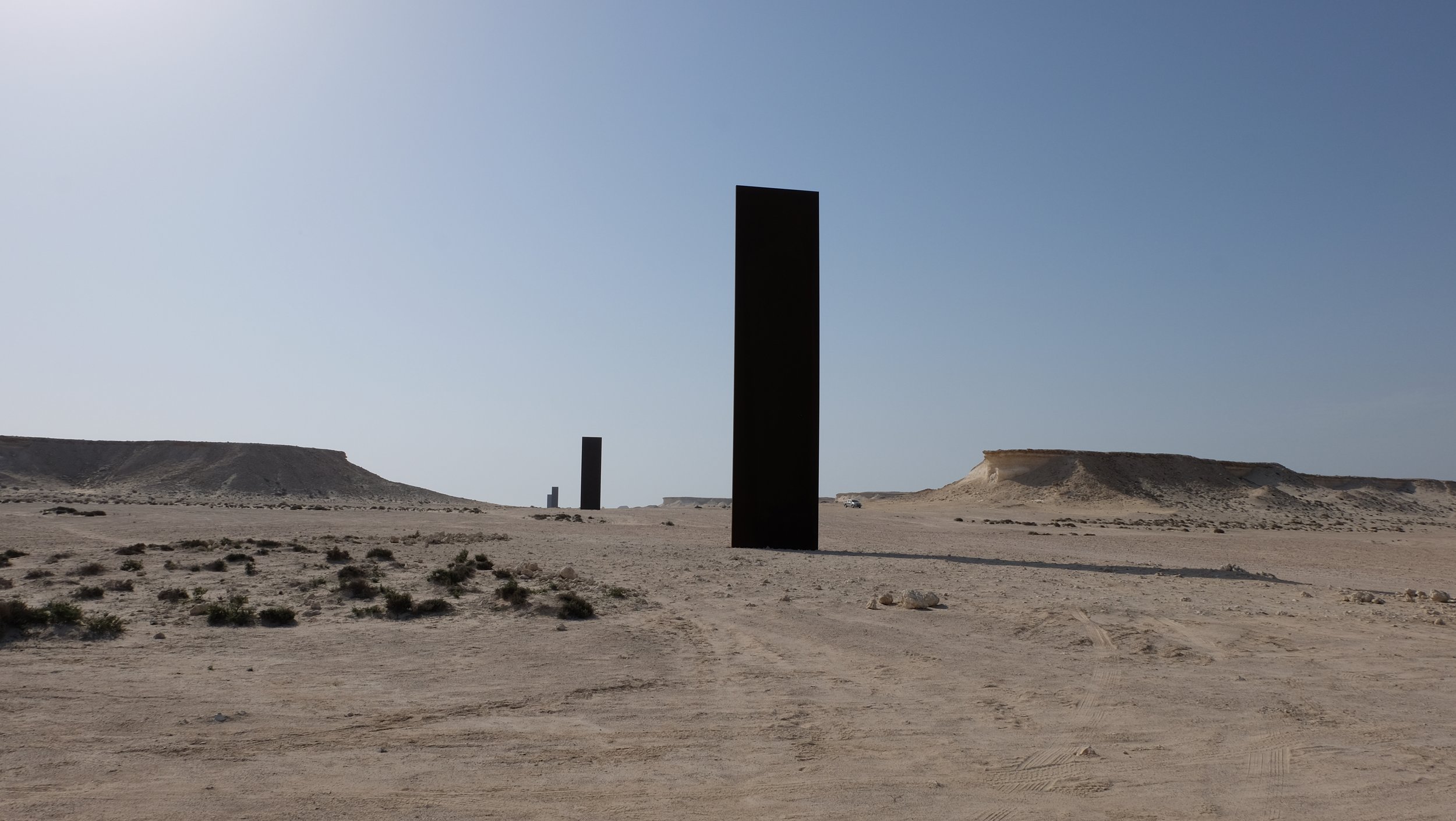With the 2022 football World Cup the global media put the spotlight on Qatar. Much has been said already about the years leading up to the World Cup when architects were busy creating the necessary venues and infrastructure. But how is the legacy of the World Cup shaping up for Qatar now that the football circus has left the country? We have asked AIA International member, Amar Hromo, who lives and works in Qatar, to take a look for us. Here’s his second report. (Read the first one here)
Public Art
Qatar has aimed to demonstrate how an art institution can turn a whole nation into an open museum, encouraging residents and tourists to travel throughout the nation while viewing artwork that has been carefully chosen to reflect the country's history, tradition, and future vision.
The installation of these famous artist's works in Qatar's public spaces is being overseen by the Qatar Museums (QM) Public Art Department. Sheikha Al Mayassa Bint Hamad Al Thani, QM Chairperson has said: “Through displaying various forms of art in public space, we aim to inspire local talent and establish an organic connection between art and the local community.” The mission of QM is clear: from the moment guests set foot in the airport, they will be introduced to Qatar's growing cultural and artistic landscape.
The “Untitled (Lamp/Bear)”, by Urs Fischer, also known as the "teddy bear" by the locals, is one of the well-known works of art that millions of tourists passing through Qatar's Hamad International Airport have seen. Currently, QM has more than one hundred works of art spread throughout the nation, and viewing three of them will compel you to travel the length of the Qatar peninsula from east to west and south to north while taking in its genuinely distinctive scenery.
Doha Mountains, by Ugo Rondinone (Photo: Amar Hromo)
The "Doha Mountains" sculpture, by Swiss artist Ugo Rondinone, is situated just 15 minutes from the airport and begins in Ras Abou Aboud. It reflects the colors of the Olympic Rings and exemplifies Qatar's commitment to the Olympic Values of Excellence, Friendship, and Respect. The sculpture sits on the beachfront with a panoramic view of the Doha skyline, allowing visitors to see both the old and new parts of the city from one location.
The Richard Serra sculpture “East-West” is in the Dukhan region, further to the west of the country. The artwork is nearly a kilometer long and is made up of four fourteen-meter-tall steel plates. The result is a timeless, modern work in the center of the distinctive west Qatari environment. They are exactly aligned based on Serra's studies of the topography of the terrain. Visitors can also tour different Qatari landscapes and the Al-Reem Biosphere Reserve, which is protected by UNESCO.
East-West/West-East, by Richard Serra (Photo: Amar Hromo)
Travellers will pass the Zubarah archeological site, another UNESCO historic site, on their way to the Olafur Eliasson installation in the north, providing them the opportunity to learn about the country's pre-oil trading and pearling history. Although the artwork may be seen from a distance, it is best appreciated when approached on foot. The trek is rewarded with captivating reflections and shadows. The artist intended for visitors to understand that when they look up, they also look down, and that this is an invitation to re-establish a connection with the ground and develop an awareness of the richness and beauty of the environment around them.
Shadows Travelling on the Sea of the Day, by Olafur Eliasson (Photo: Amar Hromo)
Sources:
East-West/West-East by Richard Serra
Doha Mountains, by Ugo Rondinone
Shadows Travelling on the Sea of the Day, by Olafur Eliasson
Amar Hromo, MSc Architect, Int’l Assoc. AIA
Contributor to AIA International Communication & PR Committee











